Our homemade pasta recipe is perfect for home cooks of all levels, even beginners! We use this fresh egg pasta dough for spaghetti, fettuccine, pappardelle, capellini, and even lasagna sheets!
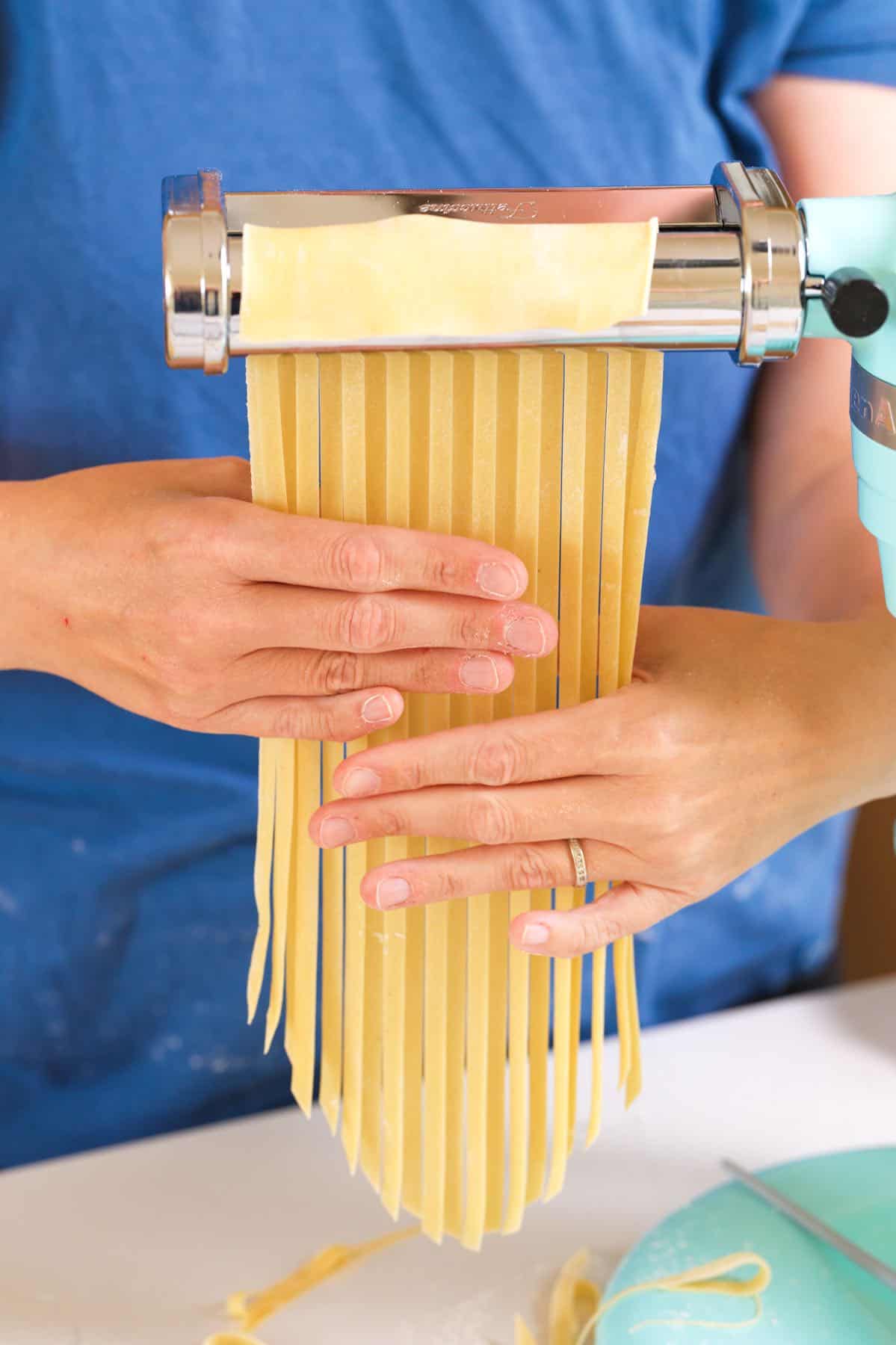
Few recipes tug at my heartstrings as much as fresh homemade pasta. If you’ve never made it before and wonder if this recipe is for you, stop. You can do it (I promise!). Homemade pasta will make you feel like a rockstar. Truly. I always feel so accomplished when I’ve made this recipe, and I think you will, too.
The ingredient list is short (just 4 ingredients), and the process is really simple, but if you’re still hesitant, we’ve included extra tips, a few key photos, and a helpful video below so you feel confident. For some of my favorite pasta recipes and ways to serve it, look at our homemade pasta sauce, perfect basil pesto, my favorite fettuccine Alfredo, and these exceptionally delicious Italian meatballs with the most delicious sauce.
Key Ingredients
- Flour: All-purpose (unbleached) will do, but if you want to upgrade your pasta, use ’00’ flour (doppio zero flour). It’s a finer grind than all-purpose, which makes your pasta more silky, smooth, and light. My local grocery store sells it, but you can also buy it online. There are many Italian brands, and King Arthur Flour and Bob’s Red Mill have recently come out with their own’ 00′ flour (sometimes called pizza flour or Italian-style flour). I also use ’00’ flour in my pizza dough recipe.
- Eggs: Our recipe calls for whole eggs. If you can find eggs with super yellow or orange yolks, use them for a really pretty pasta. I like to weigh my eggs before making the pasta dough. You need between 220 grams and 228 grams for this recipe, which should be equivalent to 4 large eggs, but if your eggs are on the smaller side, you may need to increase the liquid slightly by adding an egg yolk or some more beaten egg.
- Salt: We add salt to the dough and the water used to cook the pasta.
- Olive Oil: A little olive oil adds a bit of flavor, but more importantly, it adds richness and smoothness to the dough, making it less likely to stick to itself or the pasta machine during the rolling and cutting process.
How to Make Homemade Pasta
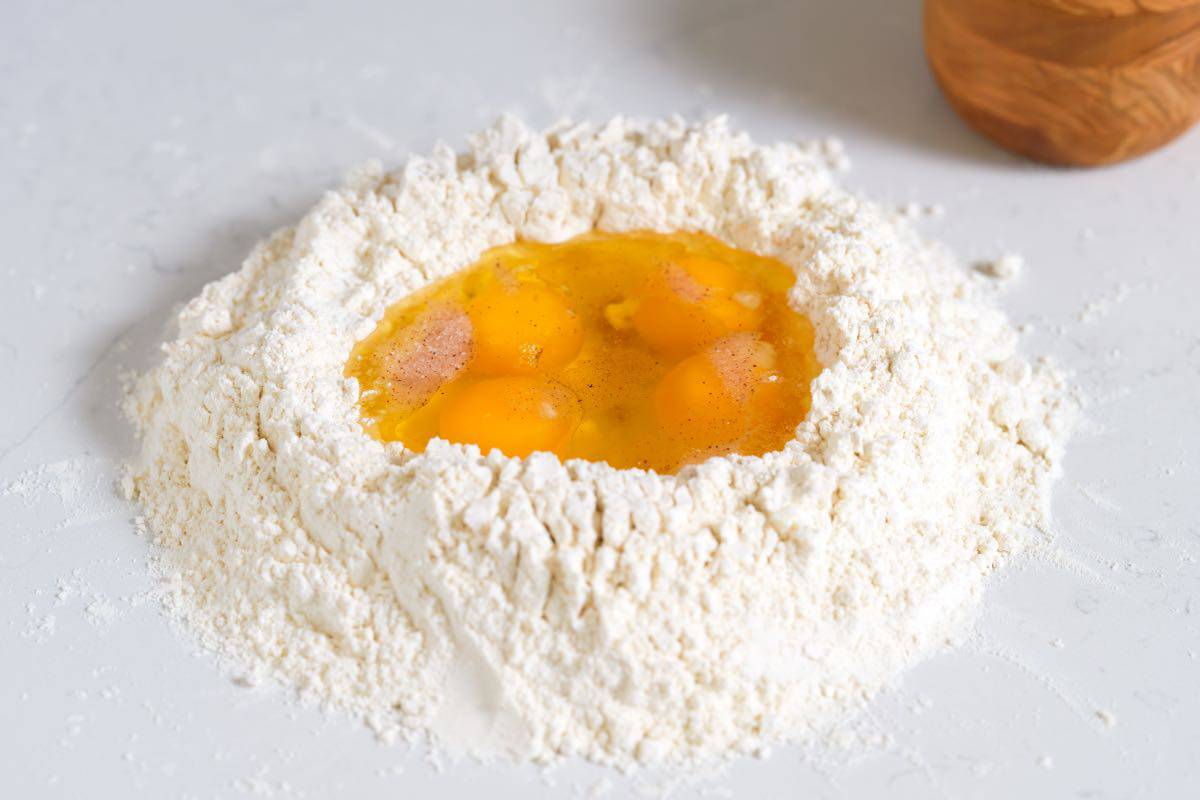
I make the pasta dough right on my counter, make a well with the flour, and fill it with eggs, salt, and olive oil. You’ll whisk the middle, pulling in some flour into the middle.
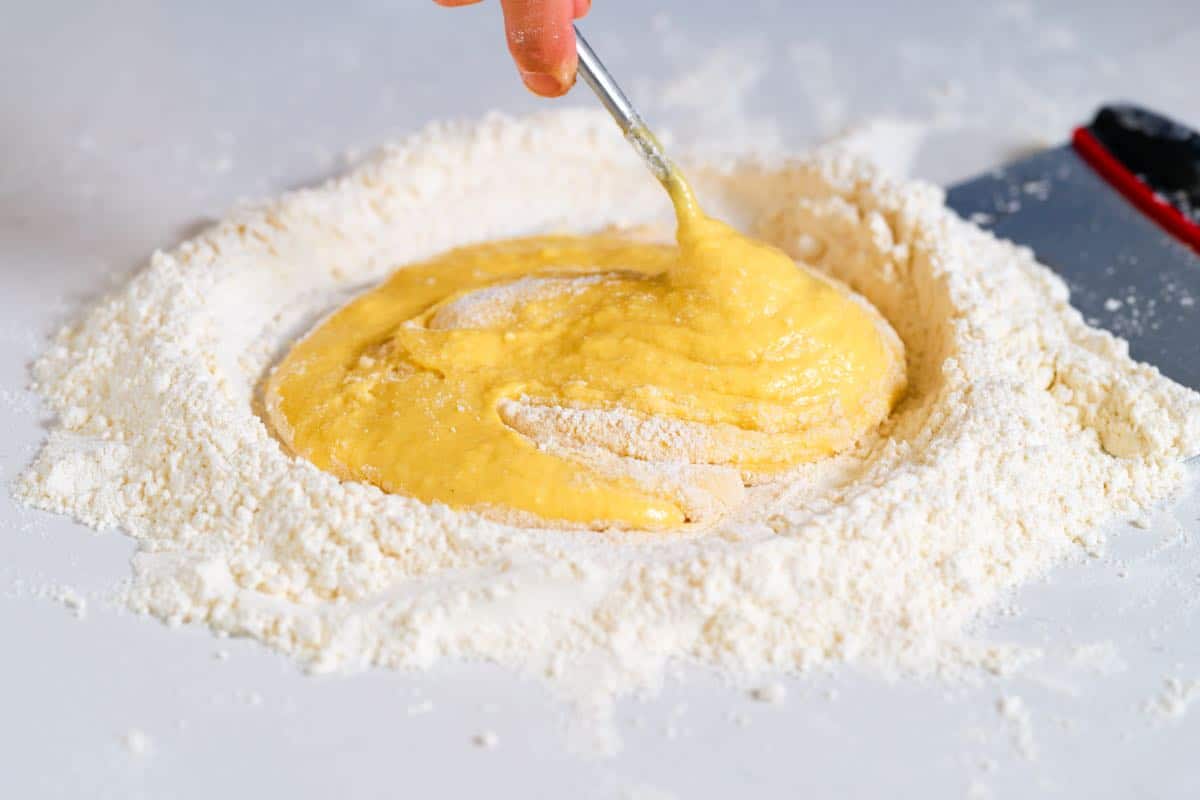
Then, when about half is mixed in, use your hands or a bench scraper to incorporate the rest (watch me do this in our video). You will knead the pasta dough for 5 to 10 minutes. You’ll slowly notice it turning into a smooth dough as you knead.
We’ll turn the dough into thin pasta sheets from here using a pasta roller, where you will move through the thickness settings, with most of your time spent on the thickest setting (#1).
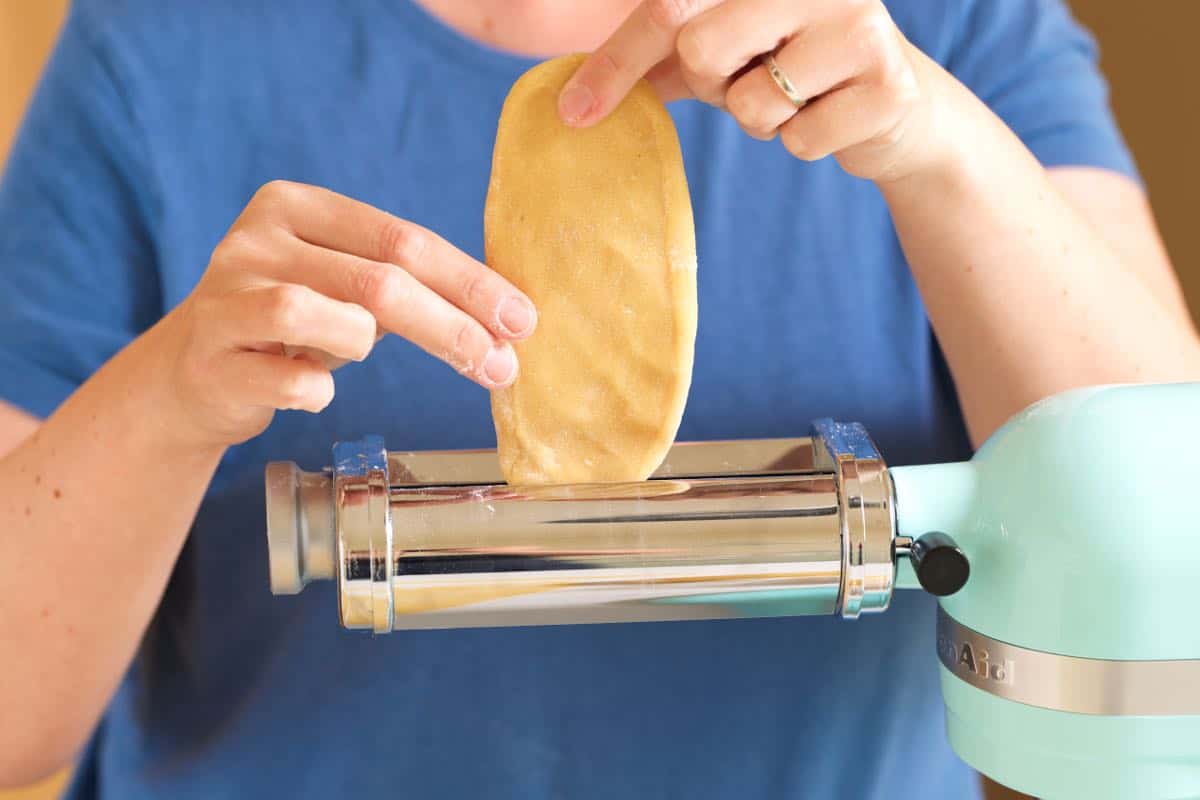
As you do this, you want to keep your dough dusted with flour to prevent sticking. Also, if you see your dough getting way out of shape, fold it to bring it back to a rectangle like this:
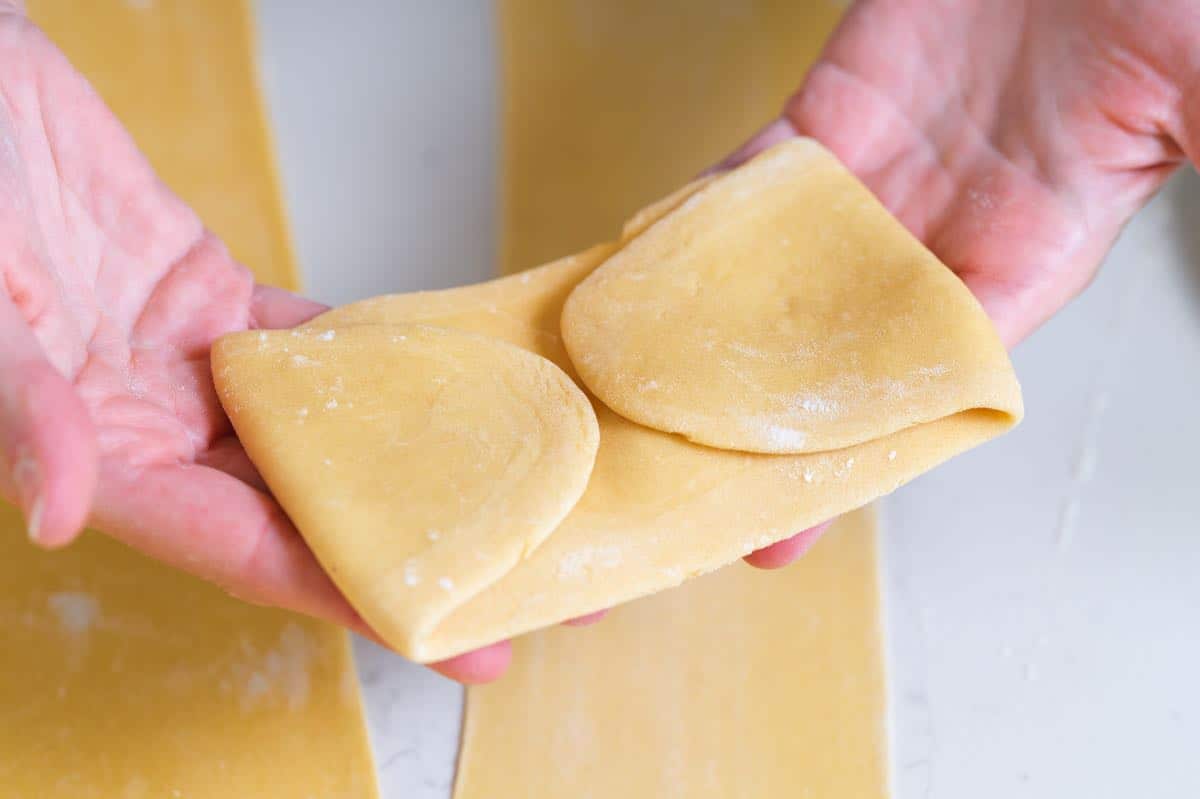
The thickness setting you stop at depends on what you are making. Level #6 is a good all-purpose thickness for linguine, fettuccine, pappardelle, or lasagna sheets. You’ll want to run your pasta sheet through level #7 and possibly #8 for thinner noodles like spaghetti or capellini.
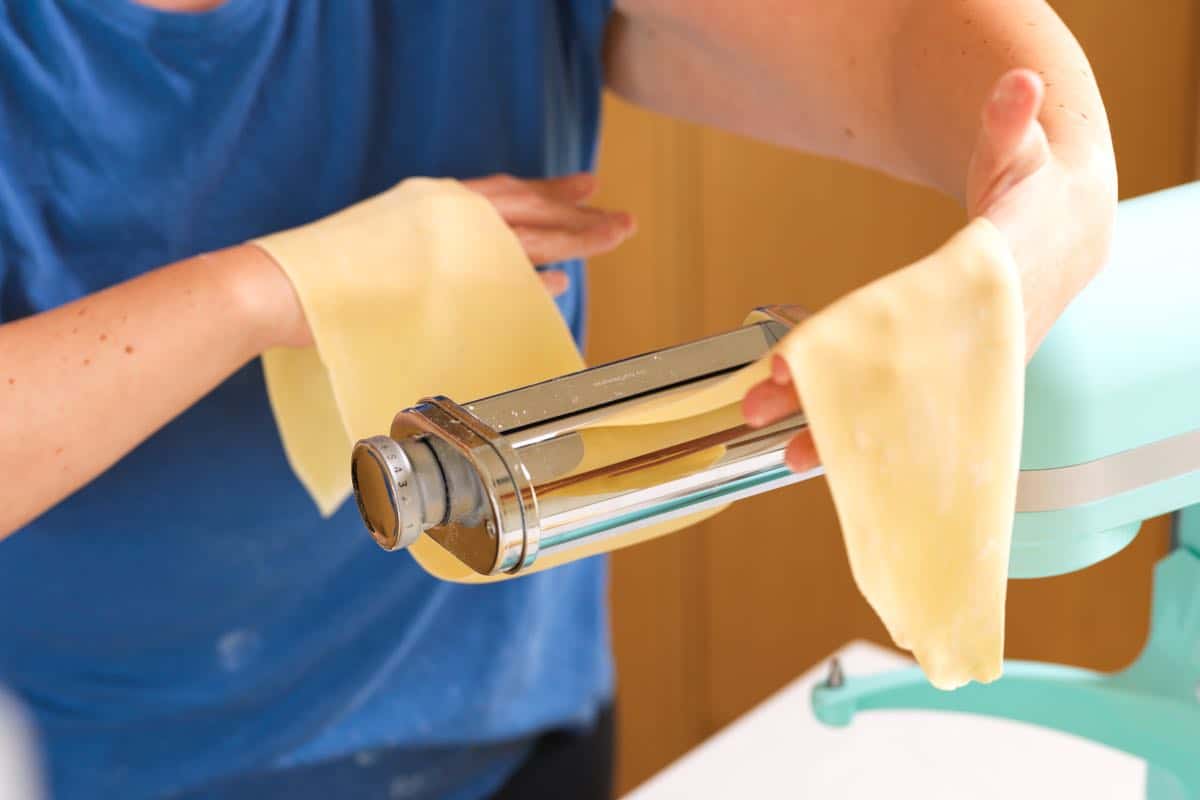
You have many choices for cutting your pasta. You can keep it as sheets and use it for lasagna. Make fettuccine for chicken Alfredo, make spaghetti for these Italian meatballs, or hand-cut the sheets to make wider noodles like pappardelle (which I love for this mushroom pasta).
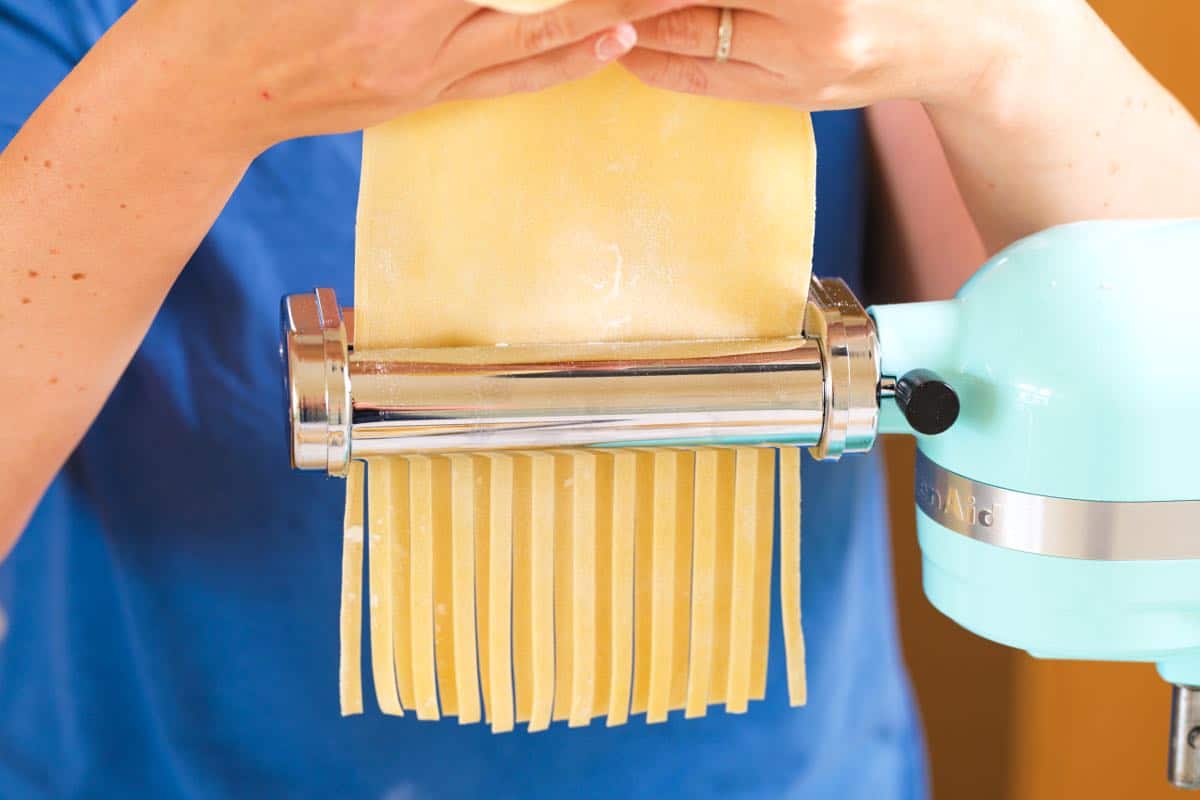
When you’ve got your noodles, hang them on a drying rack or place small nests of noodles onto a parchment-lined and lightly floured baking sheet. Let the pasta dry until it is no longer sticky before cooking. Or freeze it per our recipe directions. You can cook your homemade pasta from fresh or frozen, instructions are in the recipe. Happy pasta making!
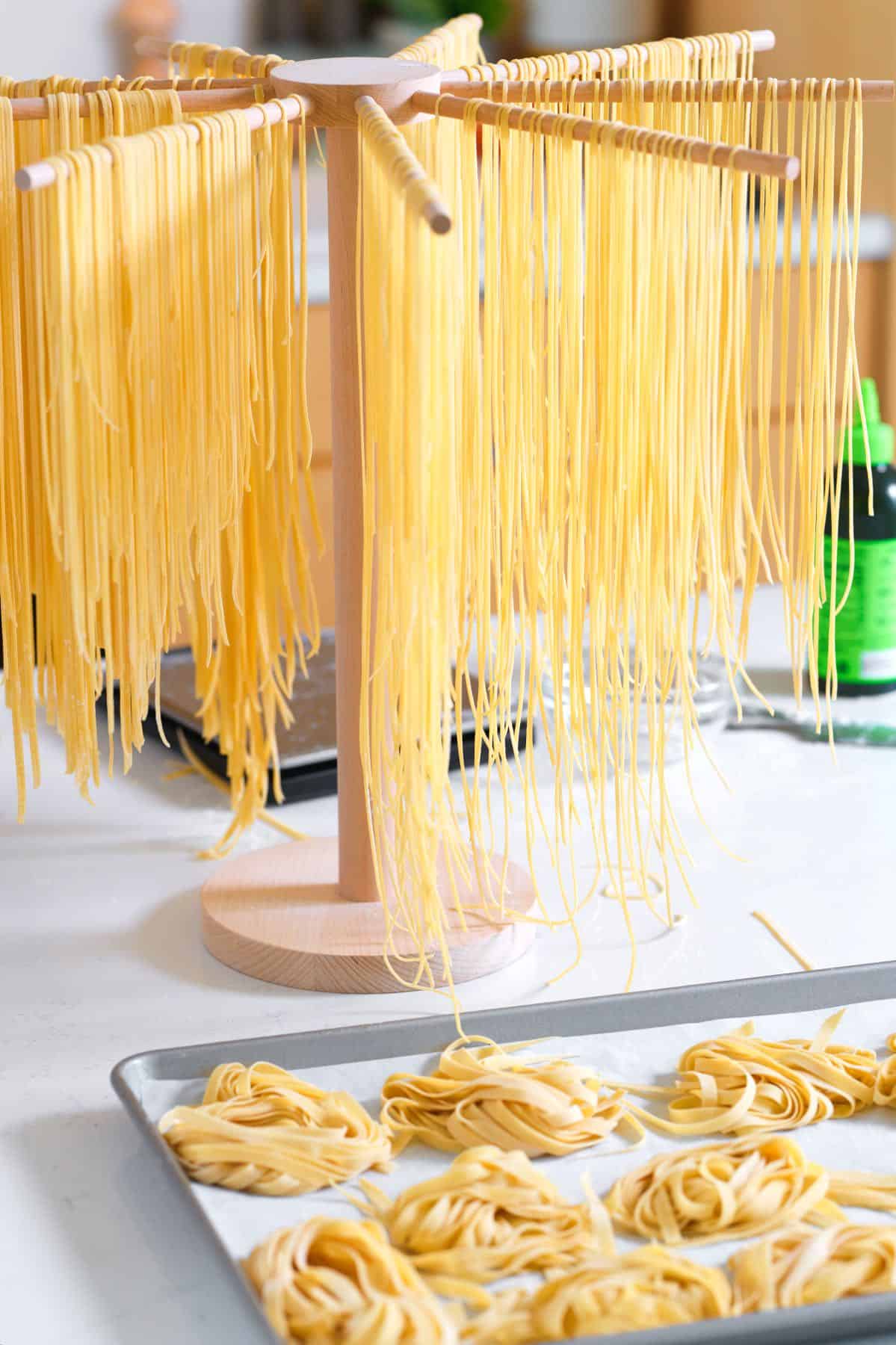
Essential Homemade Pasta
- PREP
- COOK
- TOTAL
Our homemade pasta dough is perfect for home cooks of all levels, even beginners! Remember these tips for success: (1) Weigh your flour and eggs. If you don’t have a kitchen scale, we’ve included tips below the recipe for accurately measuring flour by volume to avoid adding too much. (2) Flour is your friend: as you work with the dough—kneading, rolling, and cutting—lightly dust all surfaces of the dough frequently with flour. This will prevent it from sticking to your work surface, pasta machine, or cutters. (3) Have fun! Pasta is an amazing recipe to make with a friend or someone you love!
Watch Us Make the Recipe
You Will Need
3 cups (390g) Italian-style “00” flour or unbleached all-purpose flour, spooned and leveled
220g to 228g large eggs, approximately 4 large eggs without shell, eggs with rich yellow or orange yolks are best
3/4 teaspoon fine sea salt
1 tablespoon extra virgin olive oil
Directions
1Make pasta dough: Pile the flour on a clean work surface. Make a well in the middle and add the eggs, 3/4 teaspoon salt, and 1 tablespoon olive oil. Use a fork to break the yolks and gradually mix in the flour from the well’s edges, being careful not to break the walls of the well.
2When half of the flour is mixed in, use a bench scraper or your hands to bring the rest of the flour and eggs together, working all of the flour in. When the dough comes together, lightly flour your work surface and knead it for 5 to 7 minutes or until it is a smooth ball that bounces back slightly when you push a finger into it.
3Let the dough rest: Wrap the pasta dough with plastic and rest at room temperature for 30 minutes to 1 hour.
4Roll dough into sheets: Attach a pasta roller (sheeter) to your mixer or workbench, depending on your model, and then set it to the thickest setting (#1).
5Cut the dough into quarters. Grab one of the dough quarters, cover the rest with the plastic wrap, then use a rolling pin or your fingers to flatten the quarter of the dough into an oval that fits the thickest setting (#1).
6Run the dough through the largest setting 5 to 6 times before going to a smaller setting, always ensuring the dough is lightly floured before guiding it through the roller. To make uniform sheets, fold the dough in half lengthwise, then run it through the machine. Then, fold it widthwise before running it through the machine again. If you have uneven ends, you can fold them into the center and run the folded dough through the rollers to even them out (photo provided in the article).
7After the thickest setting, continue through the thinner settings (#2 and #3 three times, then #4 through #8 once or twice), lightly flouring both sides before each pass. The higher the number, the thinner the pasta, so stop when you are happy with the thickness (#6 is a good all-purpose thickness, and #8 is ideal for thin noodles like capellini).
8Set rolled dough sheets aside: When you are happy with the thickness of your first dough sheet, lightly dust both sides with flour, fold it over itself, and place it onto a floured surface or baking sheet, cover it with plastic wrap or a dish towel, and then repeat with the remaining dough.
9Cut the pasta: Choose a pasta cutter attachment and run each sheet through it. If your sheets are very long, cut them to a more manageable length before guiding them through the cutter. Hang your cut pasta noodles on a drying rack or place small nests of noodles onto a parchment-lined and lightly floured baking sheet. Let the pasta dry until it is no longer sticky before cooking.
10Cook the pasta: Bring a pot of salted water to a boil, add the pasta, and cook until tender, with a nice chew (test it after 2 minutes, and continue to cook and test until you are happy). Fresh pasta typically takes between 2 and 5 minutes to cook.
Adam and Joanne's Tips
- Equipment needed: Pasta roller (also called a sheeter), pasta cutter attachments, baking sheets, and a pasta drying rack (optional). Our photos and video use a KitchenAid Stand Mixer with KitchenAid Pasta Attachments.
- Storing: Arrange the fresh pasta on a parchment-lined baking sheet in a single layer in strands or as little nests. Place the baking sheet into the freezer for 30 minutes or until the pasta is hard, then gently transfer it to a freezer bag or airtight container. Freeze for up to 3 months. Then, when ready to cook, you can cook from frozen.
- Measuring the flour: Measure by weight if you can. To use volume (cup) measurements, fluff the flour in its container, then gently scoop it into your measuring cup until slightly mounded. Level off the top with a knife for accurate measuring.
- Best flour: ’00’ flour (doppio zero flour) makes the paste smoother and silkier after cooking. All-purpose is fine, though! If you use all-purpose flour, use unbleached, as it produces a better texture.
- Eggs: You need 220g to 228g of eggs for this recipe, which should be 4 large eggs. If your eggs are on the smaller side, you may need to increase the liquid slightly by adding an egg yolk or some more beaten egg.
- The nutrition facts below are estimates.

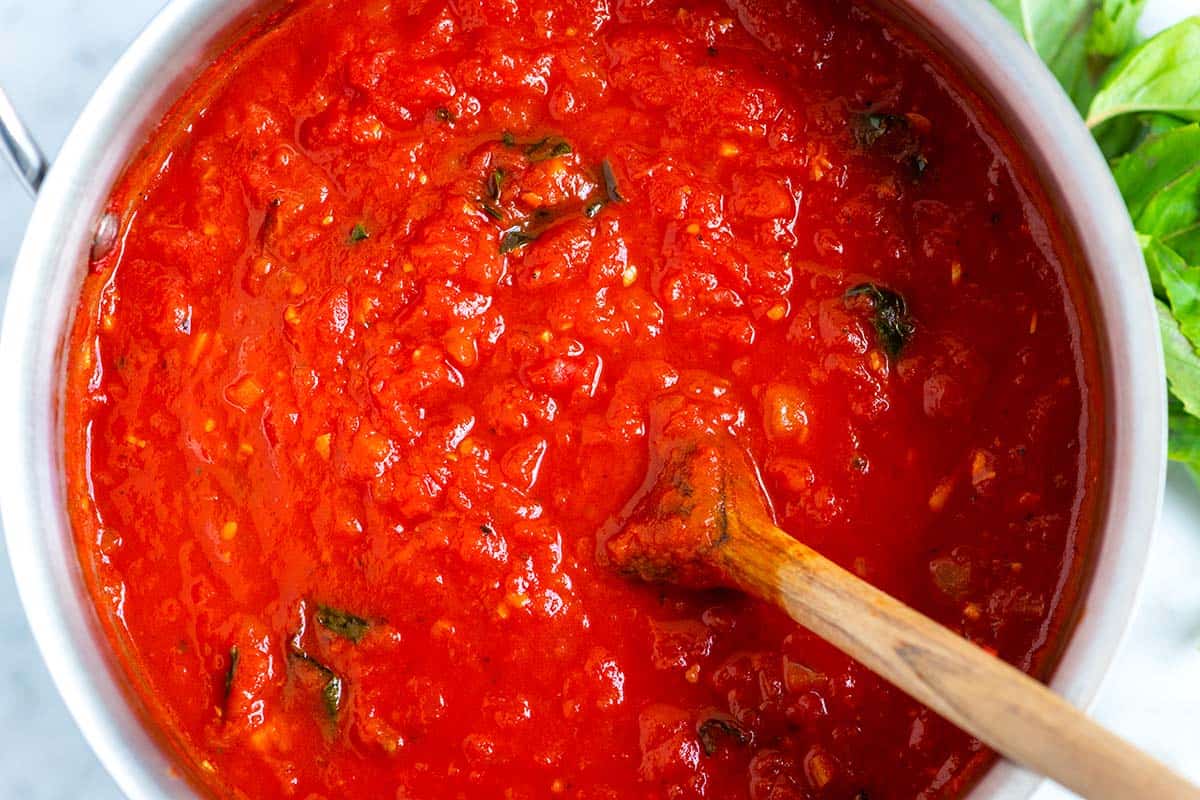
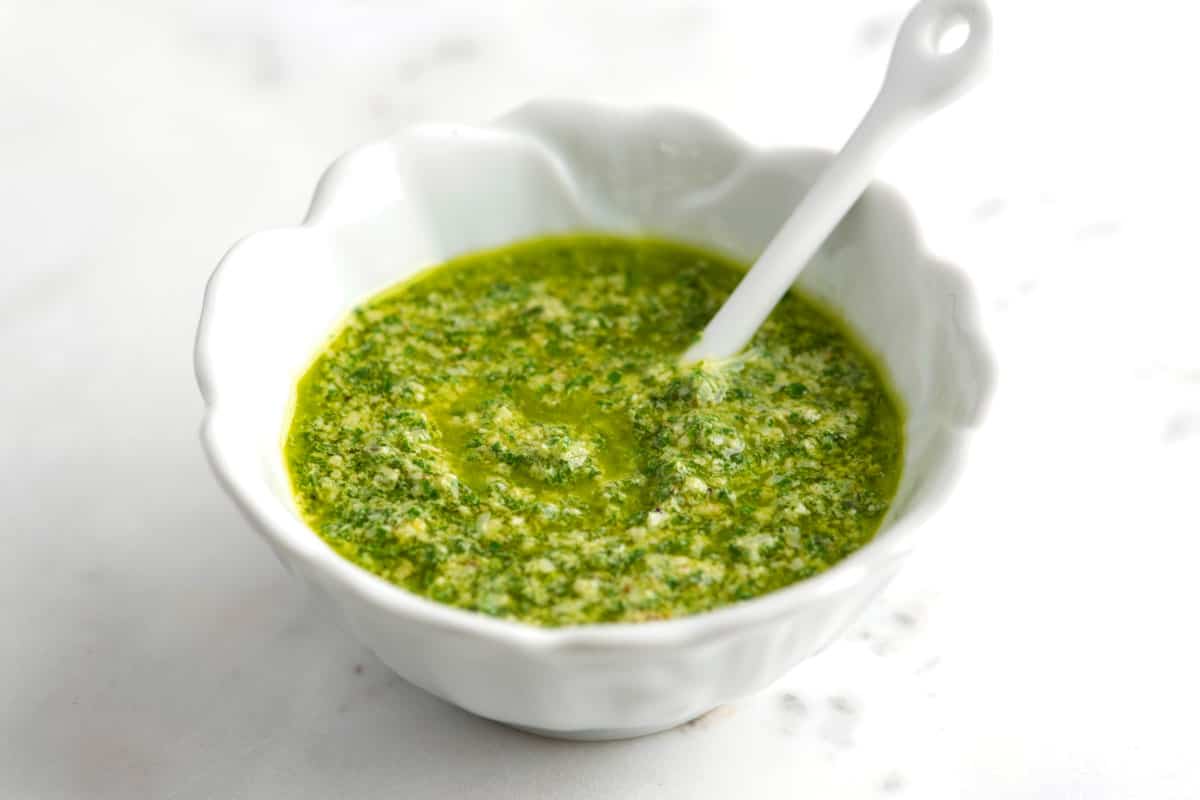
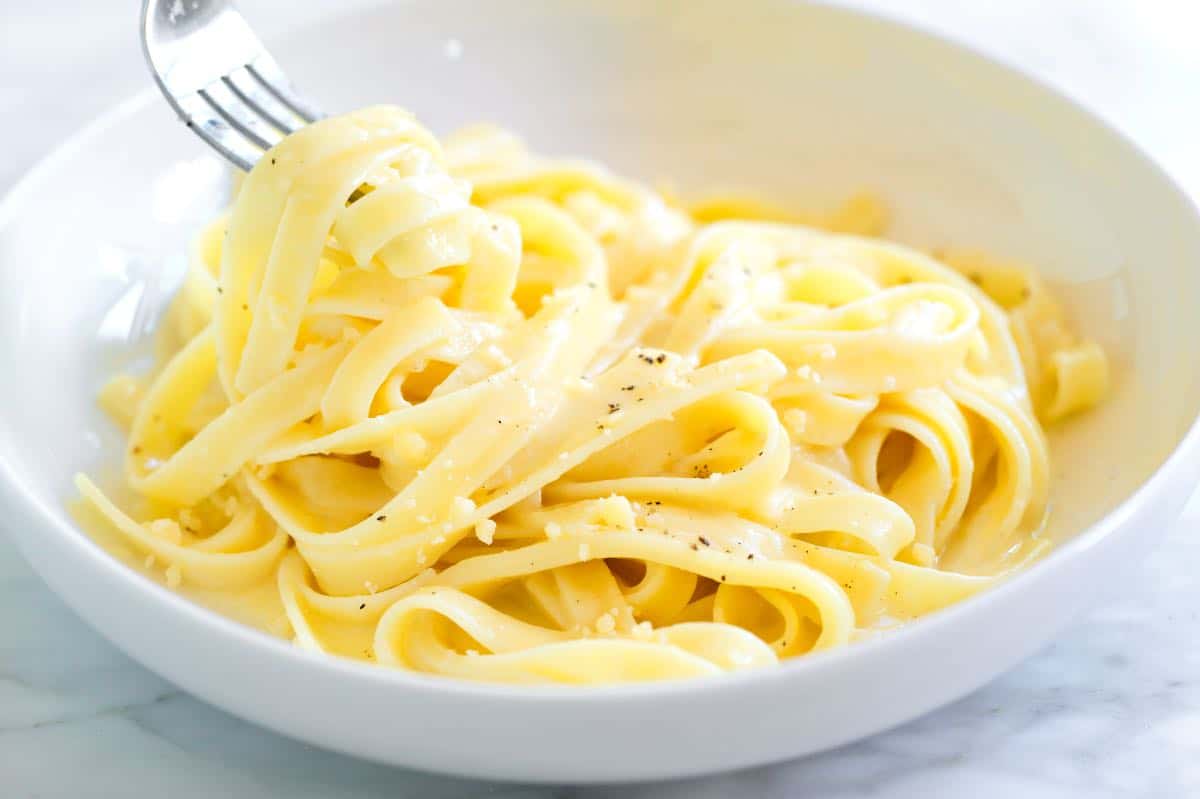
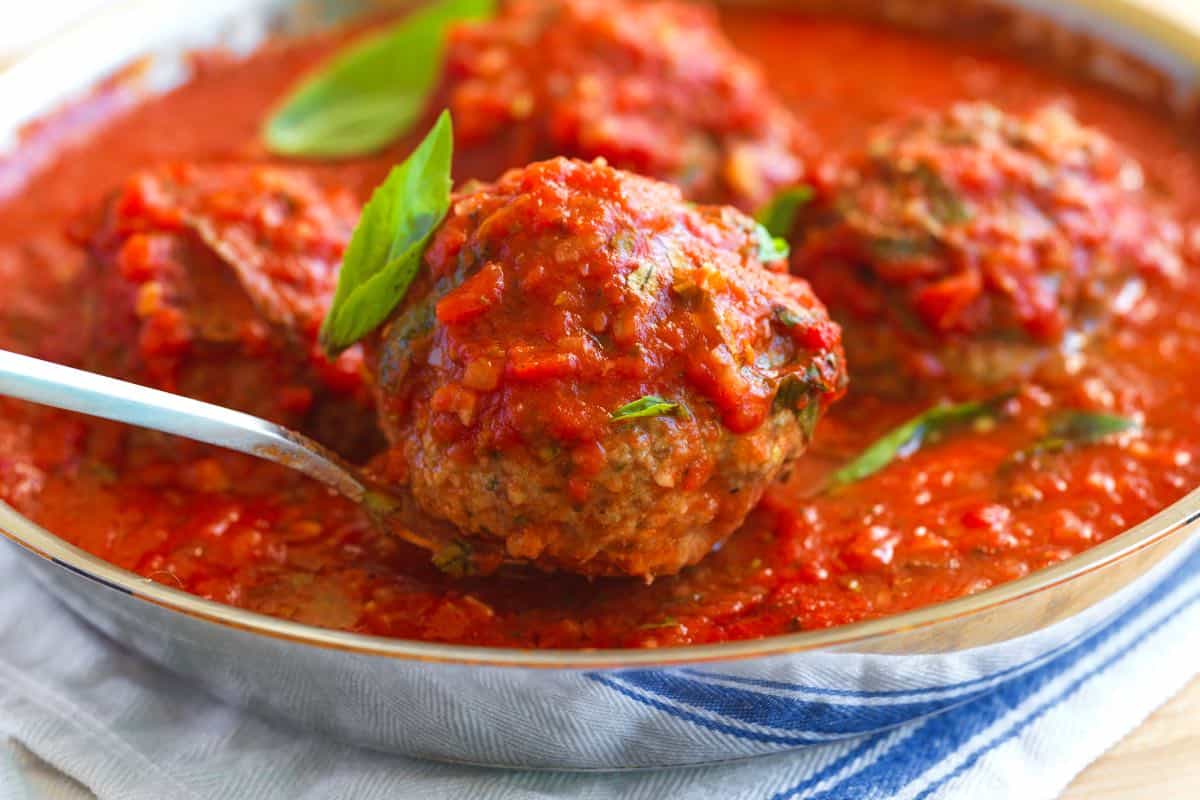
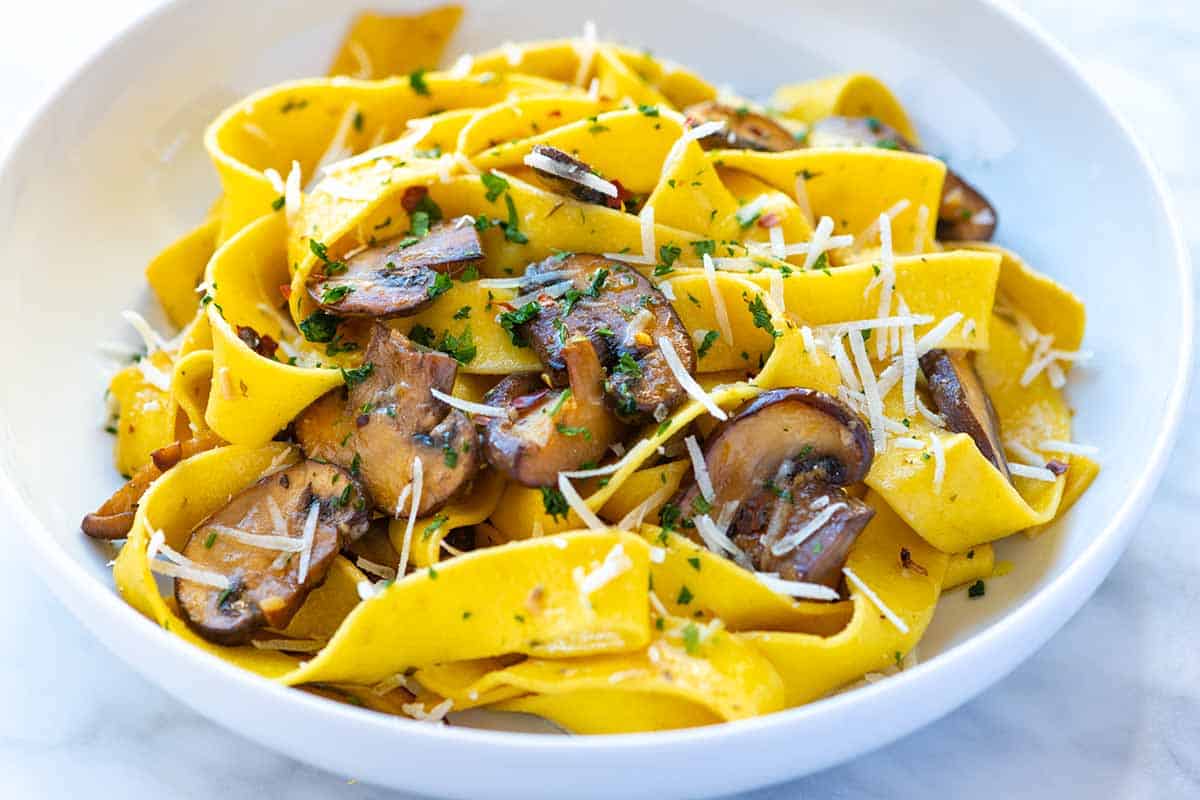
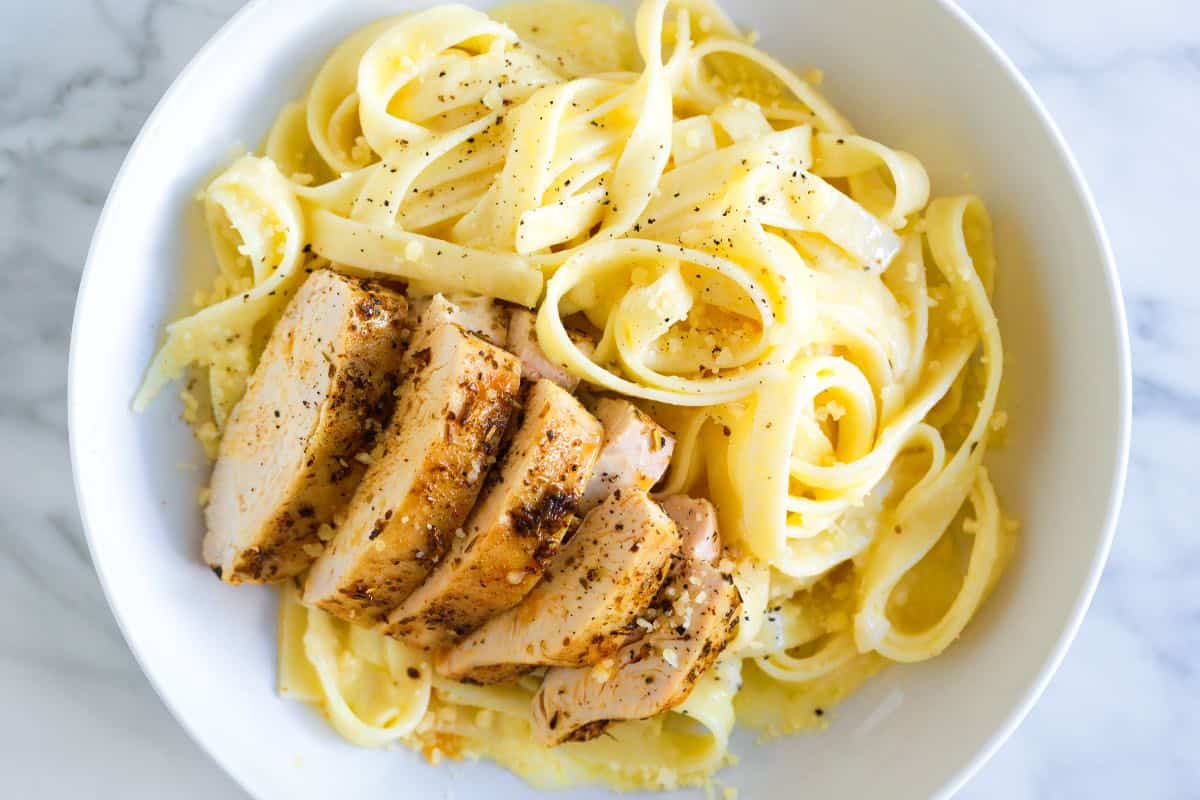


We didn’t have the fancy equipment when I was a kid. So just in case people think they need to buy anything, you don’t. A rolling pin works great as do chair backs for hanging the pasta. Anyone can do this.
The pasta was Delicious but a bit of work at My Age of 74 it is just too much work now for me. But if you are a Younger Person It does taste better and cooks in less time too. It is Fun to Get Your Kids involved in helping you too as I got the Grandkids involved in Helping me . They Loved it and had Lots of Fun. Plus Extra Bonus they are Learning to to be Cooks for when they go on their Own in Later Years . Bonus All around. My Adult Children were so Shocked to see how intrested the Grandkids were in Making the Pasta and then eating the Pasta too. Not on their Cellphones or IPads too ! ! They Even Helped with the Meatballs and Sauce too. Win Win all around. Everyone Licked their Plates .
So happy you enjoyed it! It is such a fun recipe to make with kids 🙂
As a diabetic, I am always searching for recipes that are mindful of sugar and carbs, but are still good tasting and healthy. I always look forward to your emails.Thank you for all you do, and your meals ALWAYS look fantastic. The ingredients might be something that I am unable to eat, BUT it is such a treat to watch the videos and read the recipes!!! Dianne
You made our day with this comment 🙂